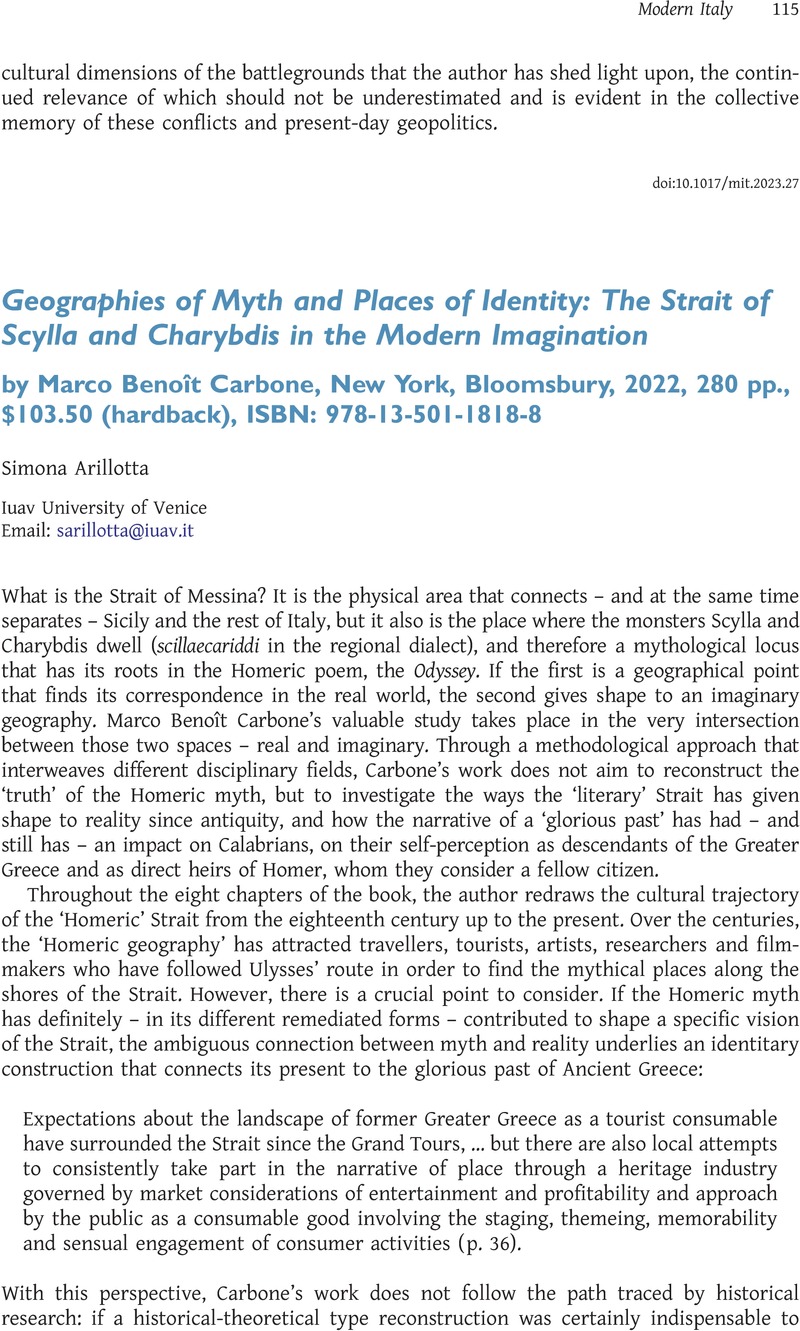No CrossRef data available.
Article contents
Geographies of Myth and Places of Identity: The Strait of Scylla and Charybdis in the Modern Imagination by Marco Benoît Carbone, New York, Bloomsbury, 2022, 280 pp., $103.50 (hardback), ISBN: 978-13-501-1818-8
Review products
Geographies of Myth and Places of Identity: The Strait of Scylla and Charybdis in the Modern Imagination by Marco Benoît Carbone, New York, Bloomsbury, 2022, 280 pp., $103.50 (hardback), ISBN: 978-13-501-1818-8
Published online by Cambridge University Press: 14 June 2023
Abstract
An abstract is not available for this content so a preview has been provided. Please use the Get access link above for information on how to access this content.

- Type
- Book Review
- Information
- Copyright
- Copyright © The Author(s), 2023. Published by Cambridge University Press on behalf of the Association for the Study of Modern Italy


